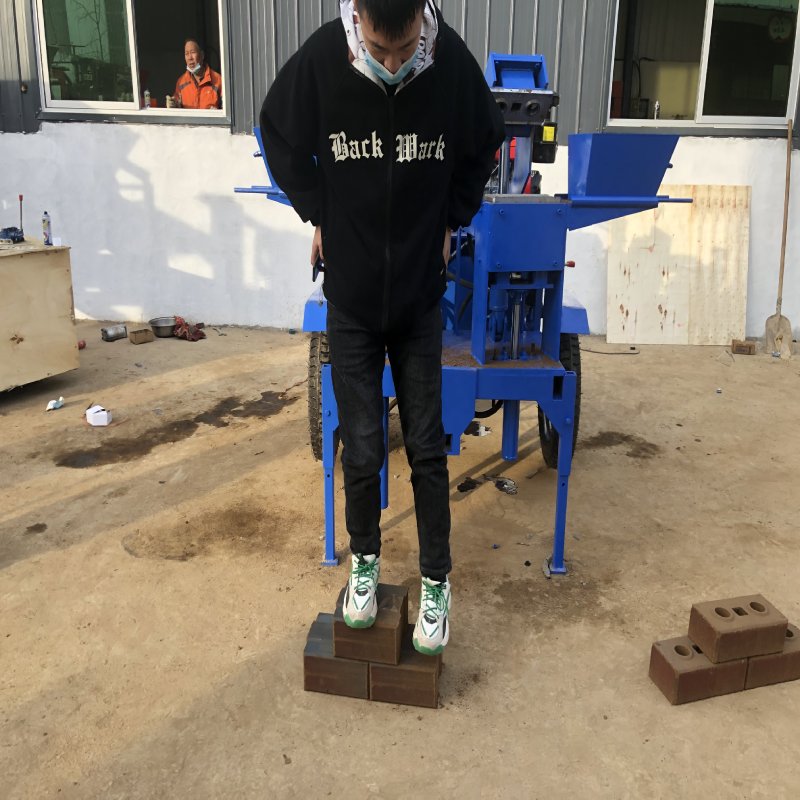
Image source:Aiwei block machine
Introduction
Chinese brick making machines have gained recognition globally for their efficiency, affordability, and technological advancements. One of the key factors that contribute to their popularity is their productivity and output capabilities. In this article, we will explore the factors that influence the productivity and output of Chinese brick making machines, including machine design, production capacity, automation, raw materials, and operational practices.
Machine Design and Production Capacity
The design of a brick making machine significantly impacts its productivity and output. Chinese manufacturers have invested in advanced machine designs that optimize production processes and enhance efficiency. The layout of the compaction system, mold, and conveyor system affects the speed and quality of brick production.
Additionally, the production capacity of the machine plays a crucial role in determining its output. Chinese brick making machines are available in a range of capacities to meet different production requirements. Machines with higher production capacities can produce a larger number of bricks within a given timeframe, thereby increasing overall productivity.
Automation and Robotics
The integration of automation and robotics in Chinese brick making machines has revolutionized the industry by enhancing productivity and efficiency. Automated systems reduce the need for manual labor, allowing for faster and more consistent brick production.
Automation in Chinese brick making machines includes features such as automatic feeding, compaction, and ejection of bricks. Robotic arms and control systems ensure precise positioning and alignment of molds, resulting in uniform brick dimensions and improved quality.
Raw Material Handling and Preparation
The efficient handling and preparation of raw materials significantly impact the productivity and output of brick making machines. Chinese manufacturers provide machines capable of processing various raw materials, such as clay, concrete, fly ash, and sand.
Chinese brick making machines often incorporate automatic material feeding systems, which streamline the process and reduce manual labor. Additionally, efficient mixing and blending mechanisms ensure the consistent distribution of materials, leading to uniform brick quality and increased productivity.
Operational Practices and Efficiency
The operational practices employed during brick production have a direct influence on the productivity and output of Chinese brick making machines. Factors such as production planning, workforce management, and maintenance schedules play vital roles in optimizing machine performance.
Efficient production planning involves organizing production schedules, optimizing batch sizes, and ensuring smooth material flow. Effective workforce management ensures that operators are adequately trained and skilled in operating the machines, resulting in higher productivity and fewer errors.
Furthermore, implementing regular maintenance practices, such as cleaning, lubrication, and inspection of wear parts, ensures that the machine operates at its optimal capacity. Timely maintenance reduces the risk of breakdowns and unplanned downtime, thereby maximizing productivity.
Quality Control and Testing
Maintaining strict quality control measures is essential for achieving high productivity and consistent output. Chinese manufacturers often implement quality control procedures to ensure that their brick making machines produce bricks that meet the required standards and specifications.
These measures include conducting regular quality checks, performing sample testing, and adhering to international quality certifications. By maintaining consistent quality, Chinese brick making machines minimize rejects and optimize productivity by reducing the need for rework.
Training and Skill Development
Proper training and skill development of operators contribute to improved productivity and output of Chinese brick making machines. Chinese manufacturers often provide comprehensive training programs for machine operators, enabling them to operate the machines efficiently and effectively.
Training programs cover various aspects, including machine operation, maintenance procedures, troubleshooting techniques, and quality control. Well-trained operators can optimize machine settings, identify and resolve issues promptly, and maximize production output.
Production Environment and Infrastructure
The production environment and infrastructure can influence the productivity and output of Chinese brick making machines. Adequate infrastructure, including sufficient space, power supply, and water availability, is necessary for smooth machine operation.
Proper ventilation and temperature control in the production area contribute to consistent curing and drying of bricks, ensuring optimal productivity. Additionally, well-organized material storage and handling systems minimize delays and interruptions in the production process.
Conclusion
Chinese brick making machines have proven to be highly productive and capable of delivering significant output. The factors influencing productivity and output include machine design, production capacity, automation, raw material handling, operational practices, quality control, training, and the production environment.
Chinese manufacturers have prioritized efficiency, automation, and advanced technology in their machine designs, resulting in increased productivity and output capabilities. By optimizing operational practices, adhering to strict quality control measures, and investing in training and skill development, operators can further enhance the productivity and output of Chinese brick making machines.
To fully utilize the potential of Chinese brick making machines, it is crucial to select the appropriate machine design, understand and implement efficient operational practices, and provide ongoing training and support to operators. By doing so, manufacturers can maximize productivity, achieve higher output levels, and meet the demands of the construction industry efficiently.
